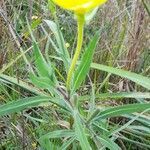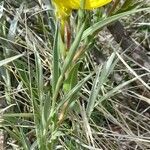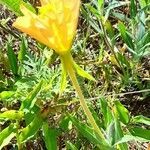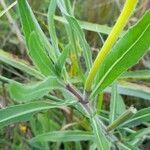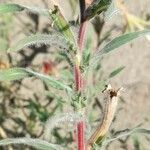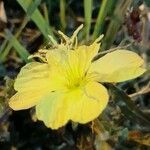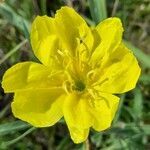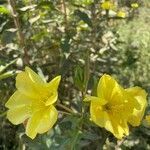Erect annual herb to c. 1.5 m high. Stems simple or branched, densely villous and glandular-pubescent. Leaves cauline, narrowly lanceolate, to 15 cm long, often c. 5 cm, usually less than 1 cm wide, sparsely serrate, usually tapering to the base and long-tapering to the acute apex. Flowers in upper axils. Hypanthium slender, 8–10 cm or more long. Sepals 2–3.5 cm long, often failing to separate. Petals usually 2–4 cm long, yellow, ageing reddish. Capsule somewhat clavate, usually 2–4 cm long, 3–4 mm wide, villous.
Annual herb, 0.4-1.5 m high, densely to sparsely long-villous and densely glandular-pubescent. Stems erect. Leaves sessile; blade cultrate to narrowly ovate, 50-150 x 5-15 mm, margins shallowly toothed. Flowers: up to 70 mm in diameter; floral tube 80-110(-130) mm long; sepals 20-35 mm long; petals 20-40 mm long, yellow; Oct. Fruit cylindrical, 30-40 mm long.
Erect annual herb, 0.4-1.5 m high, entirely covered with soft hairs. Leaves narrowly elliptic. Capsule cylindrical, 30-40 mm long. Flowers up to 70 mm in diameter; floral tube 80-110(-130) mm long; petals 20-40 mm long; yellow.
A herb.
